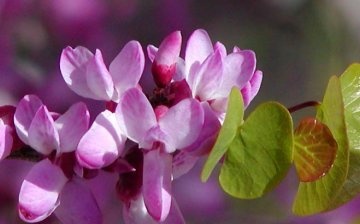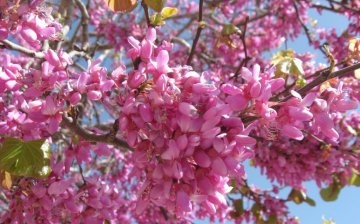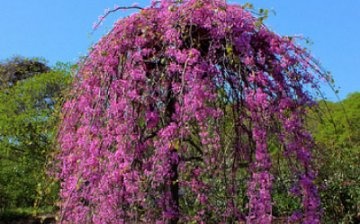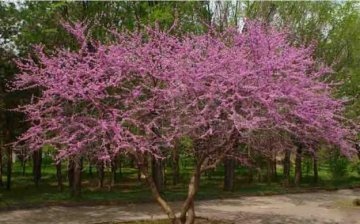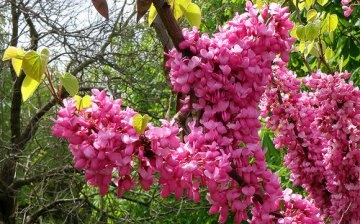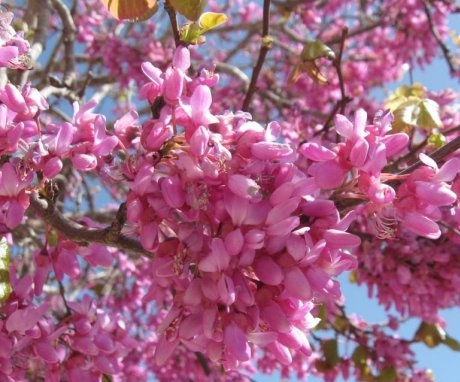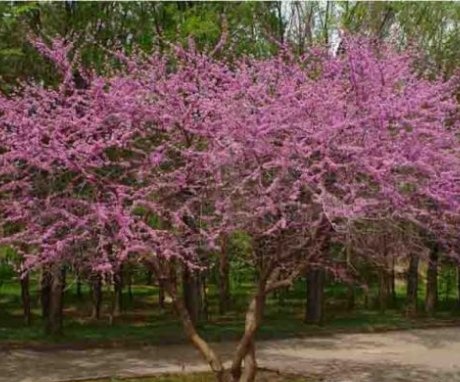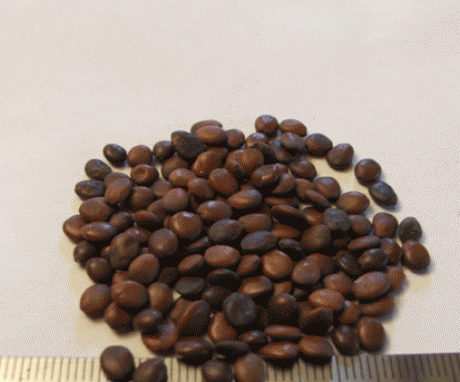Cercis: description, reproduction and care
Let's talk about a plant, one of the most famous types of which is called the Judah tree. We are talking about Cercis or Bagryanik, whose Latin name is a borrowing of the Greek word meaning "shuttle", ie. part of the loom - the fruit of the tree looks like it. This plant belongs to the legume family and is a tree or shrub with extremely bright and beautiful flowers.
Content:
- Botanical features of cercis
- Types of cercis
- Growing conditions
- Reproduction and pests of cercis
- Useful sides of cercis
Botanical features of cercis
Its distribution area is China, Asia Minor and Central Asia, the Mediterranean countries, as well as North America.
Cercis loves warmth, which accordingly affects the possibility of its cultivation - if your garden is located in a climatic zone colder than, say, Ukraine, this is a difficult and almost hopeless business, because he most likely will not survive the winter. For our conditions, relatively hardy varieties from North America are suitable.
This plant has relatively few species (according to various estimates, from 6 to 10).
There are scarlet trees or shrubs deciduous, with a height of up to 18 meters, the trunks of which have black-brown bark in cracks, and the branches at a young age and in annuals are reddish, and in adult perennials they are gray, brown or olive.
Characteristic features of cercis:
- Cercis has simple leaves with solid edges, round or ellipsoidal, with a heart-shaped base. They are petiolar, have finger-veined and are arranged spirally on the plant.
- The leaves have linear small stipules that quickly fall off.
- As for the flowers of scarlet, which are its main "wealth" for the grower, they can be located both in the "pocket" of the leaves, and on the very trunk of the plant (caulifloria). They themselves are incorrect, and on the cercis - in the form of bunches or brushes.
- The corolla of the flower is moth-shaped, and the calyx is in the form of a wide bell, somewhat angled and thickened.
- The number of diverging petals of the flower is 5, their color is either purple or pink.
- The flower has 10 free stamens.
- Crimson fruits - beans - flat, opening and narrow at the seam, located on the leg. The fruit contains about 7 smooth and flat rice-like seeds.
- The flowering period for the scarlet ends, as a rule, after the leaves have bloomed.
Types of cercis
Among the "variety" of purple, it is customary to distinguish the following types:
- Canadian cercis, in its homeland, has the greatest resistance to cold, and therefore it is more suitable for a temperate climate than others. It grows in height up to 12 meters, has large leaves and delicate pink flowers collected in bunches, small in size. There are two types - with white or double flowers.
- Chinese cercis, taller than the first (up to 15 meters), but not winter-hardy, with heart-shaped or round leaves and purple-pink flowers, 5-8 pieces per bunch.
- Cercis Griffith is a branched shrub up to 10 meters in height, it also loves warmth and will not endure natural winter here, with purple-violet flowers in the form of brushes.
- Western Cercis, also from North America and outwardly similar to a fellow countryman, however, unlike him, is bushy and has brighter green foliage.
- Kidney-shaped cercis, loves warmth, grows like a small tree or shrub, no more than 10 meters in height, and owes its name to the shape of its leaves.
The flowers are light pink in color and appear in the form of drooping long brushes (in centimeters up to 10)
- European cercis, which is also called an ordinary, prickly and Judas tree. Up to 10 meters in height, it grows both as a tree and as a shrub, it has semicircular leaves up to 8 centimeters long, flowers in bunches of purple-pink color. It blooms before the leaves appear and this delightful sight lasts for a month. Also "sissy" and requires a climate of subtropical latitudes. Therefore, its name does not lead from the fact that, supposedly, Judas hanged himself on it (there is such a myth), but from the region of modern Israel - Judea, which is precisely located on the lands of the Mediterranean.
Growing conditions
For scarlet, an open area on the south side, where there is calcareous soil with drainage, is best suited.
It is desirable that this well-lit area also be not only with good light, but also not exposed to strong winds. Cercis must "solo", so there is no need to raise him next to powerful and active plants - they will not let him dominate and suppress with their rapid development.
Care requirements:
- This is a whimsical plant, but if you initially adhere to all the necessary conditions for its cultivation, then there is no particular trouble.
- It is not hygrophilous, even "tolerant" to drought, so it will need to be watered during a period when there was no rain for a long time.
- In the spring (preferably in May), it is necessary to give him top dressing in the form organic fertilizers, and for the winter it is necessary to take care of insulating young seedlings.
For greater decorativeness, cercis at a young age is pruned for the desired formation of the crown, and subsequently the branches are cut off only if necessary.
Reproduction and pests of cercis
Cercis reproduces in two ways:
- Seeds that need to be poured with boiled water before sowing in the fall and "insist" for half an hour in sulfuric acid, and the earth after sowing for the winter should be insulated,
- Vegetatively: cut off with several buds, shoots of cercis are placed obliquely in moist soil also in autumn. Even if the seedlings die above the soil in winter, the plant will still take root and give new shoots.
This plant has a deep root system, so it is necessary to transplant a seedling to "permanent residence" in the first year of its development, when the roots have not gone deeper than half a meter and they can be removed intact.
With this, the plant is all right - the scarlet has good "immunity" from diseases, and pests bypass it.
Only rarely is it "interested" in aphids, and then standard chemical methods of control are used. this pest with cutting of young damaged shoots.
Useful sides of cercis
The scarlet has no other use other than decorative. At the same time, its spectacularity remains even in the winter season, when it is covered in picturesque lush bunches of legumes.
As mentioned above, cercis will provide the gardener with a whole month of beautiful flowering, in which few can compete with him.
He looks great when planted alone and nothing bothers him. However, in the composition, this is a magnificent plant, especially against the background coniferous shrubs.
At alley landing it is necessary to maintain a reasonable interval in distance so that the cercises do not interfere with one another from developing. The main difficulty in cultivating this plant is climatic conditions.
More information can be found in the video.



